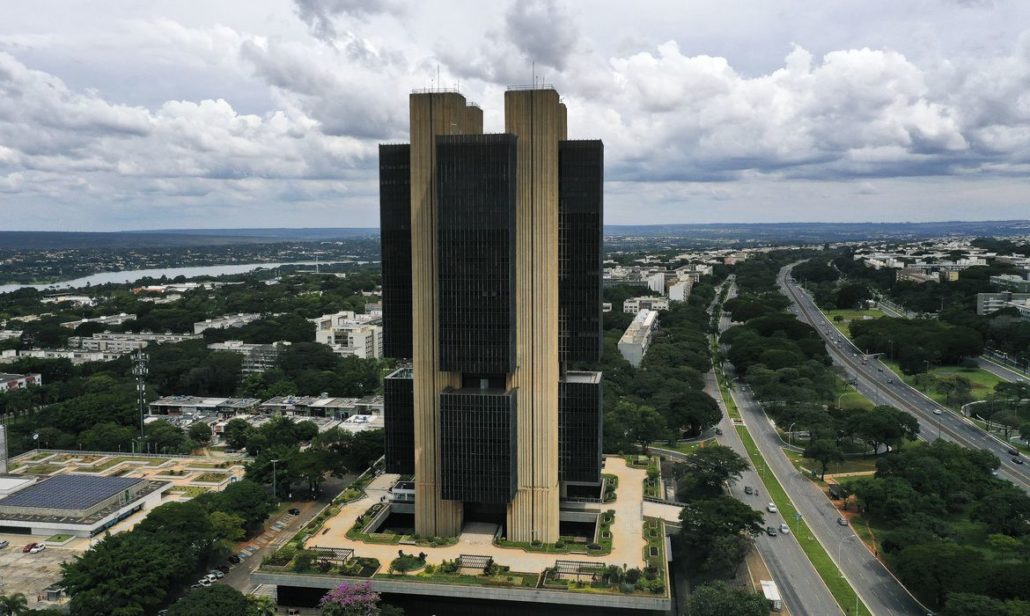Professionals anticipate COPOM will actualize monetary tightening following communication adjustments
08/13/2024
/i.s3.glbimg.com/v1/AUTH_37554604729d4b2f9f3eb9ad8a691345/internal_photos/bs/2024/U/w/cPWtENThAYOPolKOuBtQ/imgm4295.jpg)
Genoa’s André Raduan, Itaú Asset’s Bruno Serra Fernandes, and Verde’s Luiz Parreiras — Foto: Divulgação
Central Bank’s Monetary Policy Committee (COPOM) is anticipated to consider an increase in the Selic, the policy interest rate, during its next session. Leading asset managers, including André Raduan from Genoa Capital, Bruno Serra Fernandes from Itaú Asset, and Luiz Parreiras from Verde Asset, suggest that this is in light of recent adjustments in the committee’s communications aimed at bolstering credibility as a leadership change looms at the Central Bank.
Speaking at a Warren Investimentos event, they noted that since last week’s remarks by Gabriel Galípolo, the director of monetary policy—including his latest speech—domestic assets have responded to the anticipation that the Central Bank’s new leadership in 2025 will adhere to a strict inflation targeting regime, potentially at the cost of higher interest rates.
Recent IPCA data (Brazil’s benchmark inflation index) indicating an uptick in the expected rate for next year suggests that the COPOM may have no alternative but to enact the discussed austerity measures.
The employment figures are better than anticipated, impacting wages and income, while economic activity has shown unexpected robustness. The Central Bank’s models indicate inflation trending above target, per André Raduan. Mr. Raduan elaborated, “There’s a general consensus that interest rates need to be increased. It’s a prudent measure to stabilize expectations and diminish the risk premium.” He added, “This sets the stage for more substantial rate cuts next year.”
If the exchange rate was stabilized between R$4.90 and R$5.00 per year, the Central Bank might maintain the current Selic rate of 10.5% for a more extended period. However, with a robust economy, historically low unemployment rates, and significant fiscal stimuli provided last year and this year, rising inflation beyond target could elevate expectations, suggests Mr. Parreiras.
“The exchange rate has complicated an already complex situation. It might necessitate a more assertive response from the Central Bank. The exchange rate, having risen from R$5 per dollar at the end of 2023 to R$5.70 recently, almost inevitably impacts expectations significantly,” Mr. Parreiras commented. “An interest rate hike seems increasingly necessary to regain control over inflation.”
Mr. Serra, a former director of monetary policy at the Central Bank, noted that investors have been concerned about potential restrictions on the Central Bank’s institutional role. “Central banks adjust interest rates as necessary—raising them when required and lowering them when possible. There can be no stable currency environment if there are constraints on these actions.” As the valve for uncertainty was currency depreciation, inflationary expectations rose. “The exchange rate would probably be much closer to R$5 [per dollar] than R$6 if we hadn’t had this doubt. The fact is that this doubt will gradually be cleared up in due course.”
When the market perceived that the Central Bank would maintain its usual approach, long-term interest rates quickly rebounded, suggesting that the next likely move would be to raise interest rates due to a more challenging economic environment, Mr. Serra explained.
Despite recent easing, he does not believe this will deter the COPOM from pursuing a rate hike. Echoing remarks made by Mr. Galípolo in a previous discussion, he emphasized that the Central Bank cannot simply revel in robust economic performance; it must remain vigilant “and remove the punch bowl just as the party gets going.”
Mr. Parreiras noted that even the stock market has rallied because of the decline in long-term interest rates, reflecting “an almost instantaneous gain in credibility.” The risk premiums monitored by Central Banks also declined. “The difference between being caught in a vicious cycle and entering a virtuous one appears almost magical, a matter of credibility. The market reacts swiftly once it shifts its perception.”
While the Brazilian Central Bank is leaning towards raising interest rates, the U.S. Federal Reserve is expected to begin reducing its rates. Mr. Serra contends that Jerome Powell’s Fed should not cut its benchmark rates too hastily but should proceed cautiously to avoid advocating for rapid reductions. “By allowing the market to anticipate a longer cycle, it achieves a more favorable outcome,” he noted, adding that in the U.S., the impact of monetary policy on economic activity is more immediate, unlike the delayed effects often observed in Brazil.
Mr. Raduan of Genoa Capital expressed that his firm is not anticipating a high likelihood of a recession, noting that both American consumers and companies are relatively deleveraged.
Conversely, Mr. Parreiras from Verde Asset highlighted the historical unpredictability of U.S. unemployment rates, which do not tend to rise gradually but rather in sudden spikes, posing a significant risk. “The economy is so robust that it overshadows the microeconomic conditions; it’s more about the prevailing attitudes, making it challenging to predict when unemployment will rise,” he explained.
Mr. Parreiras also speculated that the U.S. Federal Reserve is likely to enact up to three interest rate cuts by 2025. “In my view, the cuts could come sooner rather than later. The U.S. Federal Reserve was close to reducing rates by 0.50 percentage points in July but ultimately held back,” he noted.
*Por Adriana Cotias — São Paulo
Source: Valor International

/i.s3.glbimg.com/v1/AUTH_37554604729d4b2f9f3eb9ad8a691345/internal_photos/bs/2023/R/d/gFReY9TbiOsTPGi7qIxA/18925322325-14effe2721-o.jpg)
/i.s3.glbimg.com/v1/AUTH_37554604729d4b2f9f3eb9ad8a691345/internal_photos/bs/2023/O/b/qf7J6nQJSw4efzLgJvMg/campos-neto-drexl-mcamgo-abr-07122023-2.jpg)
/i.s3.glbimg.com/v1/AUTH_37554604729d4b2f9f3eb9ad8a691345/internal_photos/bs/2021/T/j/jCICRvTO2uACa7BJn9yg/050218flag06.jpg)
/i.s3.glbimg.com/v1/AUTH_37554604729d4b2f9f3eb9ad8a691345/internal_photos/bs/2024/q/O/YF9tRFRfWe3tLbzWLUMw/160322santander36.jpg)
/i.s3.glbimg.com/v1/AUTH_37554604729d4b2f9f3eb9ad8a691345/internal_photos/bs/2021/i/v/ae4plwRcaByTN1FWsNyA/080721diogo15.jpg)
/i.s3.glbimg.com/v1/AUTH_37554604729d4b2f9f3eb9ad8a691345/internal_photos/bs/2021/a/b/nBbtxbSdqCAAzOQ6Zvkg/predio-banco-central-reproducao-facebook.jpg)
/i.s3.glbimg.com/v1/AUTH_37554604729d4b2f9f3eb9ad8a691345/internal_photos/bs/2022/K/O/J5MU4DRbAAX68TwAaXQQ/bancocentral.jpg)

/i.s3.glbimg.com/v1/AUTH_37554604729d4b2f9f3eb9ad8a691345/internal_photos/bs/2022/3/z/SRGh64Q6yOR8xLSqSUtw/img20220531152101532.jpg)